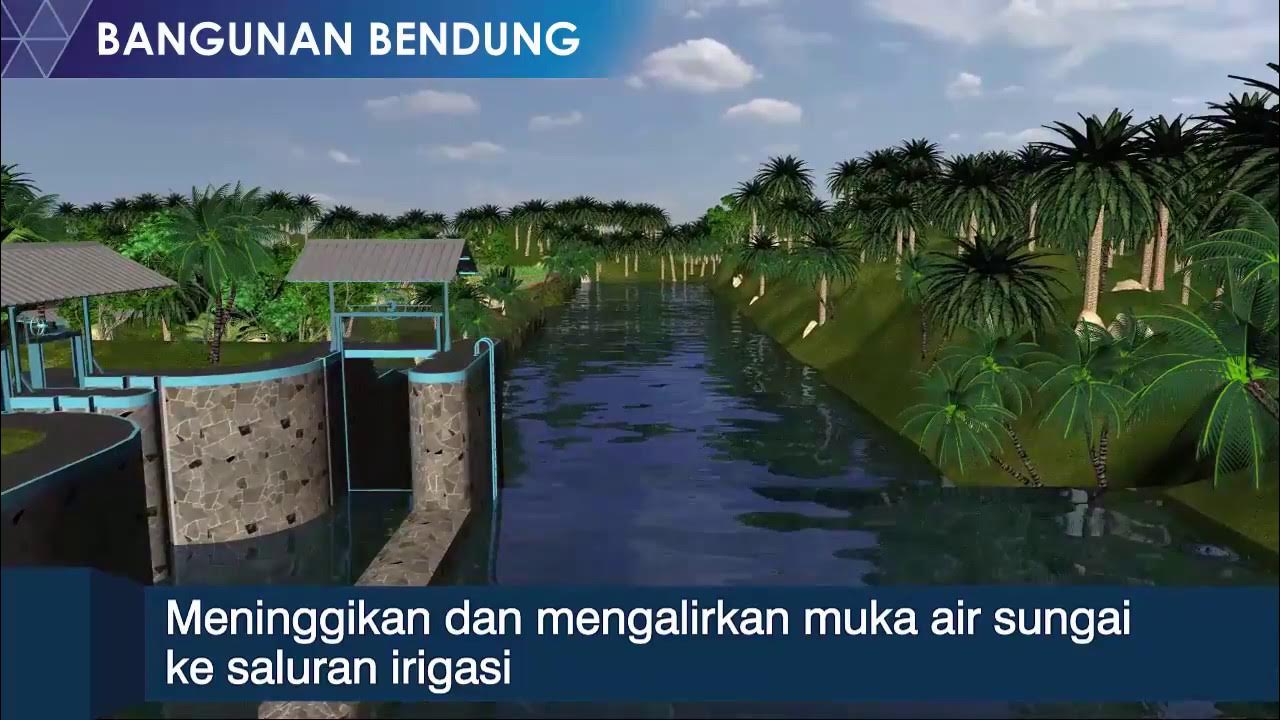Bangunan Air - HIDROLOGI
Summary
TLDRThis video explains the essential components of Indonesia's agricultural irrigation systems. It covers surface irrigation methods, where water is diverted from rivers through intake structures and distributed via primary and secondary canals. Key infrastructure elements like measurement, drop structures, spillways, and conservation techniques, such as sediment control, are highlighted. The role of dams and reservoirs in water storage and regulation is also discussed, along with the importance of efficient water management in supporting agriculture. The video concludes with a real-time warning about flood risks from the Katulampa Dam, emphasizing the need for vigilance in water management.
Takeaways
- 😀 Irrigation in Indonesia primarily uses surface irrigation systems that channel water from rivers to agricultural fields.
- 😀 Water is taken from rivers via intake structures, which regulate the flow of water and prevent debris from entering the irrigation channels.
- 😀 Irrigation channels are divided into primary and secondary systems, which distribute water efficiently to agricultural lands.
- 😀 Key infrastructure includes intake structures, primary and secondary channels, and water-splitting buildings for proper distribution.
- 😀 Other important components of irrigation systems include water measurement buildings, spillways, and bridges for inspecting or crossing irrigation channels.
- 😀 The water measurement building gauges the flow of water in the system, while spillways handle excess water to prevent overflow or damage.
- 😀 Sediment control structures help in removing dirt and mud, ensuring clean water flows into the irrigation system.
- 😀 The dam is a critical structure for raising water levels and storing water, with a controlled release system to prevent overflow and flooding.
- 😀 Dams are equipped with hydraulic or manual gates for regulating water release, with emergency outlets to handle high water volumes during storms or heavy rainfall.
- 😀 Conservation efforts include building concrete-lined channels with specific slopes to prevent soil erosion around dams, ensuring long-term stability and effective water management.
Q & A
What is the primary irrigation method used in Indonesian agriculture?
-Indonesia primarily adopts surface irrigation systems, where water is diverted from rivers to support agricultural land.
How is water initially diverted from the river for irrigation?
-Water is first diverted through a building that raises the river's water level, with part of the river's flow being directed towards the irrigation canals.
What role does the intake structure play in the irrigation system?
-The intake structure controls the flow of water into the irrigation network, preventing the entry of large debris and regulating the water flow.
What is the purpose of the secondary canals in the irrigation system?
-Secondary canals distribute water from the primary canals to various agricultural plots, ensuring an efficient water flow across the farmland.
What are the key functions of water measurement and regulation buildings in the system?
-Water measurement buildings gauge the water flow in the irrigation system, while regulation buildings such as weirs and sluice gates manage the flow and prevent erosion.
How do spillways contribute to the irrigation infrastructure?
-Spillways are designed to handle excess water by safely channeling it away from the irrigation system, preventing flooding or damage during heavy rainfall.
What measures are taken to conserve water within the irrigation system?
-Water conservation is achieved through infrastructure like sediment control systems, reservoirs, and concrete-lined channels to prevent soil erosion and optimize water flow.
Why are sediment control systems important in the irrigation process?
-Sediment control systems, such as sedimentation ponds and traps, prevent sediment buildup in the canals, which can block water flow and damage the system.
What are the functions of reservoirs and dams in water management?
-Reservoirs and dams store water during the rainy season and release it during dry periods, ensuring a continuous water supply for irrigation.
How do emergency measures like diversion gates protect the irrigation system?
-Diversion gates and spillways act as emergency measures to prevent flood damage by redirecting excess water, ensuring the stability of the irrigation infrastructure.
Outlines

This section is available to paid users only. Please upgrade to access this part.
Upgrade NowMindmap

This section is available to paid users only. Please upgrade to access this part.
Upgrade NowKeywords

This section is available to paid users only. Please upgrade to access this part.
Upgrade NowHighlights

This section is available to paid users only. Please upgrade to access this part.
Upgrade NowTranscripts

This section is available to paid users only. Please upgrade to access this part.
Upgrade NowBrowse More Related Video

Sistem Irigasi di Indonesia (Kuliah Irigasi dan Bangunan Air)

REVOLUSI HIJAU - KELAS XII - SEJARAH INDONESIA

Perencanaan Bangunan Bagi - Sadap

Bendung dan fungsinya

Kuliah 13 Perubahan iklim dan implikasinya terhadap budidaya pertanian

News MBC TV: Inovasi Teknologi Pertanian; Menyiram Tanaman dari Jarak Jauh
5.0 / 5 (0 votes)